In this article:
About This Recipe
What is country bread?
“Country Bread” is what most people think of when they hear the word “sourdough.” It is the most popular way of making sourdough bread to date. This type of bread is made from a wet(ish) dough, strengthened by hand, and baked at high temperatures with steam to create a crispy crust and chewy interior. This type of bread can be made with a variety of flour types for different flavors and textures. For this recipe, we will stick with the basics and use the most basic four ingredients that can make a bread: flour, water, salt, and yeast (sourdough starter).
What I love about this recipe:
The process for this bread is simple and straight-forward. There is no autolyse or fermentolyse; instead, all the ingredients are mixed together at once, meaning you won’t forget to add anything to the dough. Working the dough by hand means that no special equipment is necessary to get it together. This recipe uses visual cues over timing, so you will know when your bread is ready for the next step. The Dutch-oven bake gives this recipe the perfect crust, and the cold ferment helps set the classic sourdough flavor.
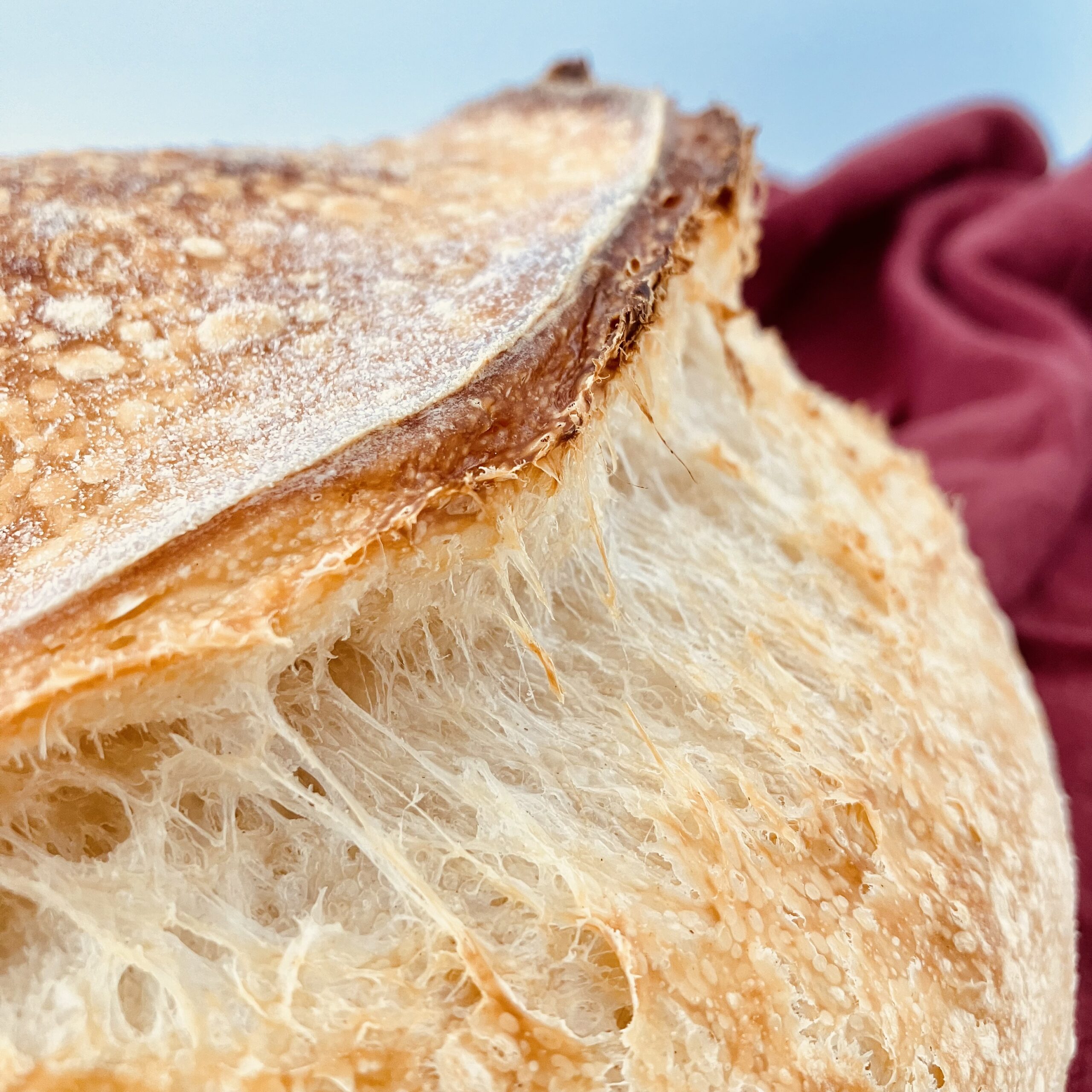
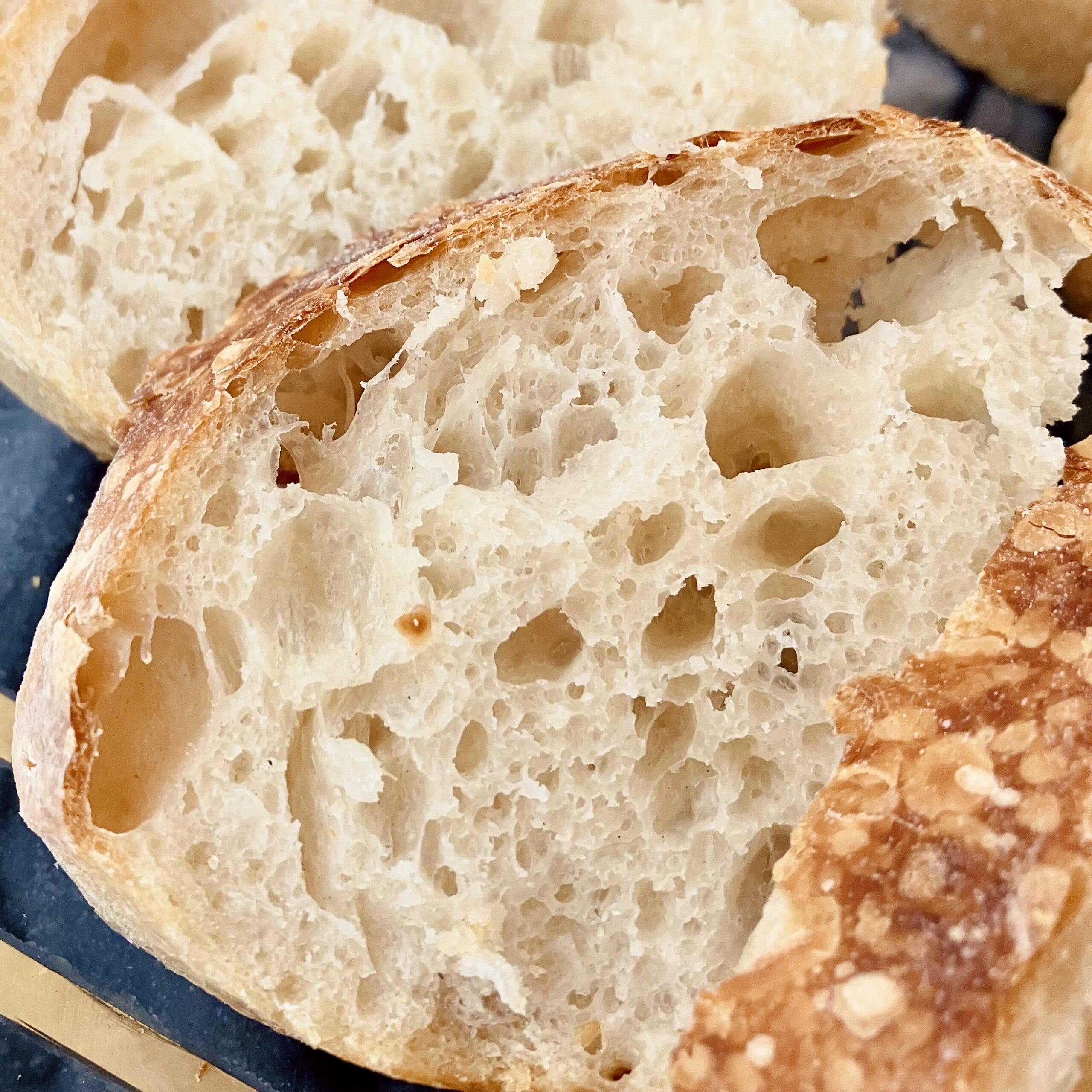
All the "why's"
Bread flour
This is such an important component that cannot be skipped over! Flour affects the dough and end result so much. Because this dough has a hydration of over 70% (that means it has a good amount of water!) it needs a strong flour to lend the best results. The flour will help the gluten develop and will give the loaf its beautiful shape and oven spring. Try to use a flour with a protein content of at least 12% for best results. I use King Arthur Bread Flour in any recipe that calls for bread flour.
Hydration
I’ve made this loaf a little bit flexible, giving you a dough that can be made with more or less flour to liquid ratio. Altogether, the process is the same, but the end result is slightly different. Less flour lends a more moist and chewy interior, with a slightly more open crumb. It’s all up to your own personal preference which is your favorite.
Gluten Development
This dough does not include any sort of enrichments, and so the gluten is easily developed by hand. Here, I use a series of intervaled folds to gently work the gluten, creating a tall, round loaf that can hold in air bubbles beautifully. For all the ways you can develop gluten in your sourdough bread, check out the video below. Or, to learn more about gluten development and why it is so important in your sourdough bread, read more here.
Bulk Fermentation
This loaf is left to double in size after all folds are complete. I find this lends the best crumb and flavor of dough. This is only possible with a properly developed dough, which comes from the combination of strong flour and intervaled folds. In reality, a properly fermented sourdough bread only has to increase in size by about 30%. Despite this, the longer the dough is left to ferment, the lighter and airier the loaf becomes (and a well-fermented dough is my personal preference).
Shaping
This dough is gently shaped in two intervals: a pre-shape and a final shape. The pre-shape gets the dough ready for the final shape, to make sure the dough and air bubbles are evenly dispersed, while also tightening the skin to help the gluten. The final shape gets the dough into the actual shape it should be for baking. The technique used in this recipe gently works the dough, keeping the air bubbles intact as much as possible, while also providing the perfect amount of tension for proper oven spring.
Cold Proof
Though placing the dough in the fridge isn’t necessary, I find it creates a deeper flavor and makes the loaf easier to score. It also provides the loaf with just enough steam that adding ice or water to the Dutch-oven isn’t necessary.
Scoring
In my video, I teach you how to score your dough at the right angle for the most prominent ear, as well as how to do a five-minute score to improve expansion in the oven. In reality, if your dough is well-strengthened, the loaf will expand just perfectly without scoring at the right angle or adding the extra score at five minutes.
Baking Method
I find 450 F is the perfect temperature for allowing the loaf to expand beautifully and prevent the dough from cooking too fast. A dough cooked at too high of a temperature will result in a thick, dark crust, with possible cracks (as the loaf was not finished expanding in the oven). In addition, the Dutch-oven method adds the perfect crisp to the loaf, and helps capture steam without any extra effort on the baker’s part.
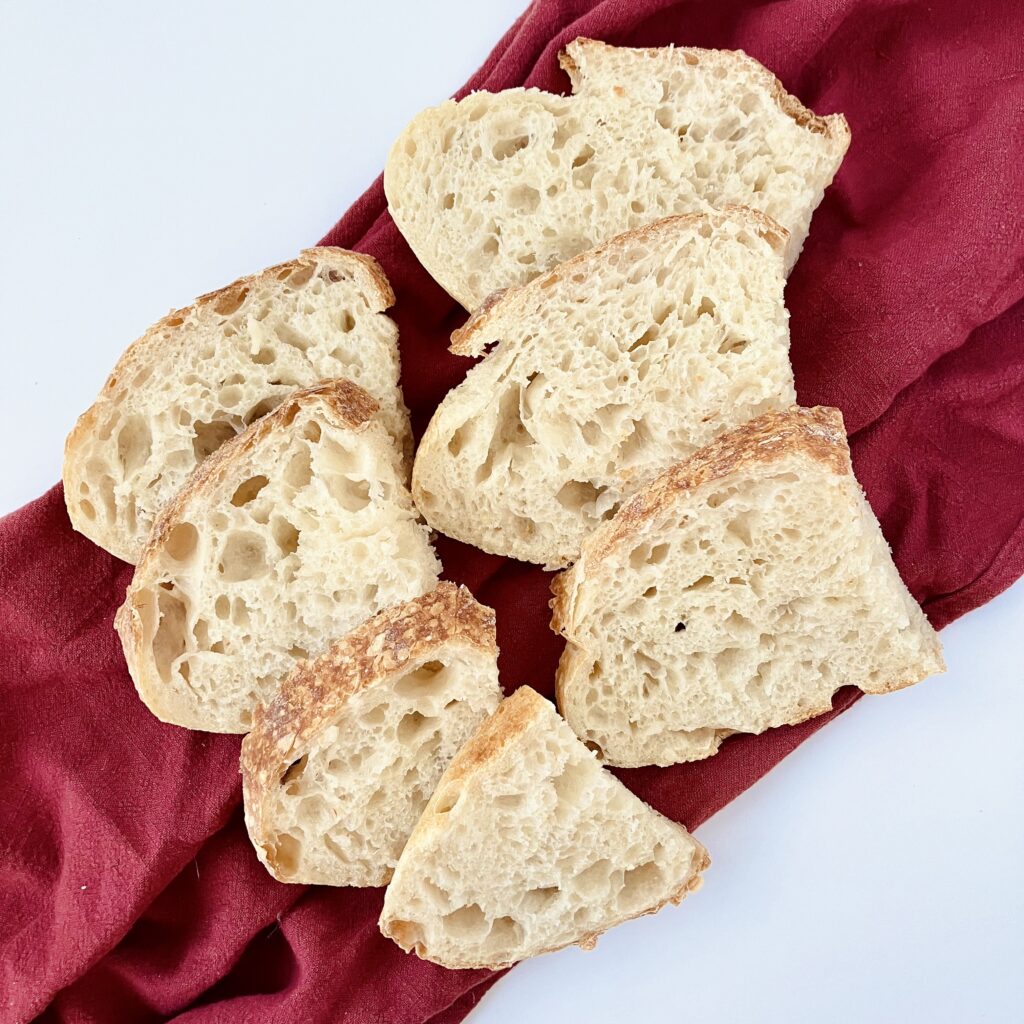
Suggested Baking Timeline
8 AM (Day 1)
+Mix the dough
8:45 AM - 11 AM (Day 1)
+Strengthen the dough
11 AM (Day 1)
+Finish bulk fermenting the dough
5-9 PM (Day 1)
+Shape the dough
+Transfer to refrigerator overnight
The next day
+Bake and enjoy!
Suggested Work Day Baking Timeline
7 PM (Day 1)
+Mix the dough
7:45 PM - 10 PM (Day 1)
+Strengthen the dough
10 PM (Day 1)
+Bulk ferment the dough overnight
6-8 AM (Day 2)
+Shape the dough
+Transfer to refrigerator
After work
+Bake and enjoy!
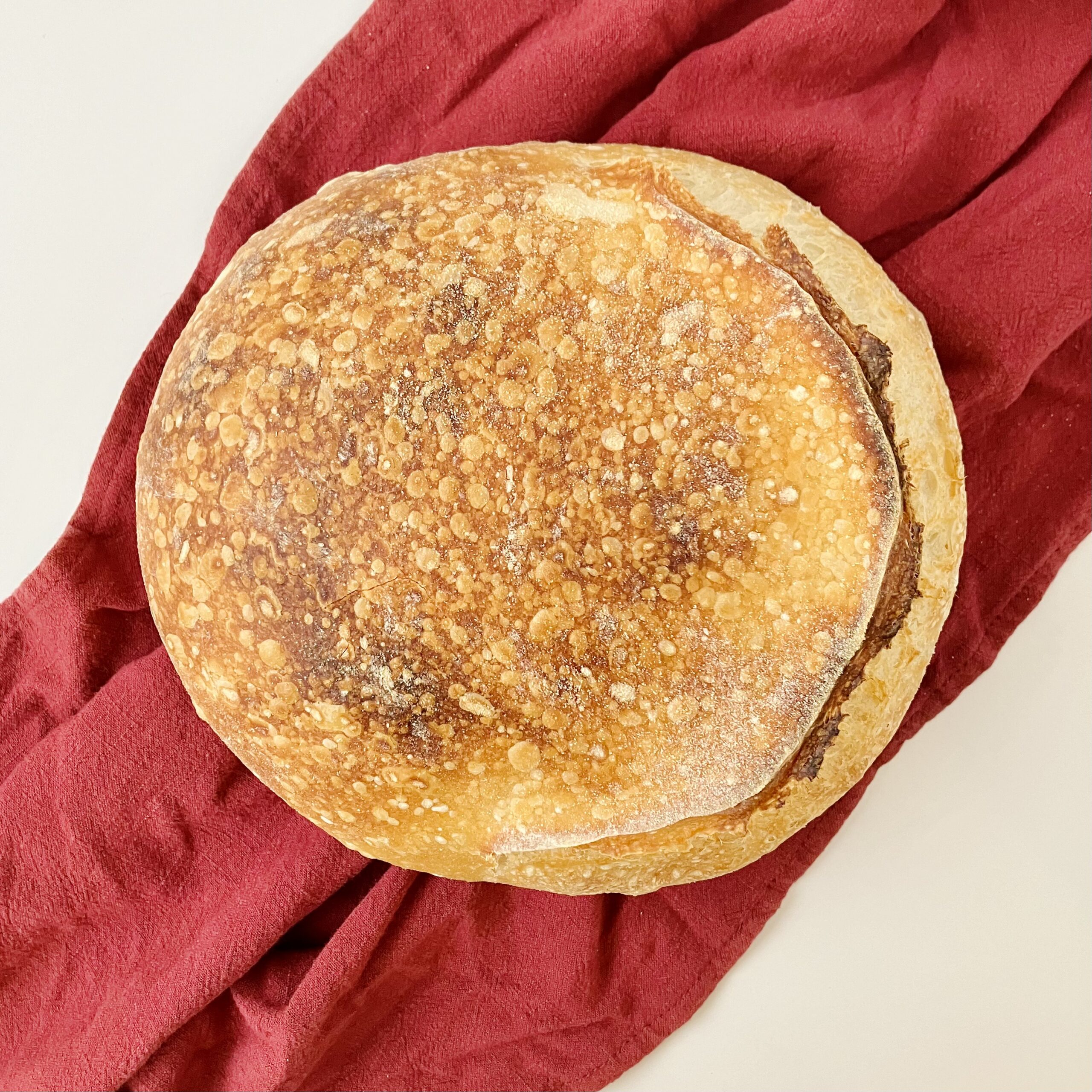
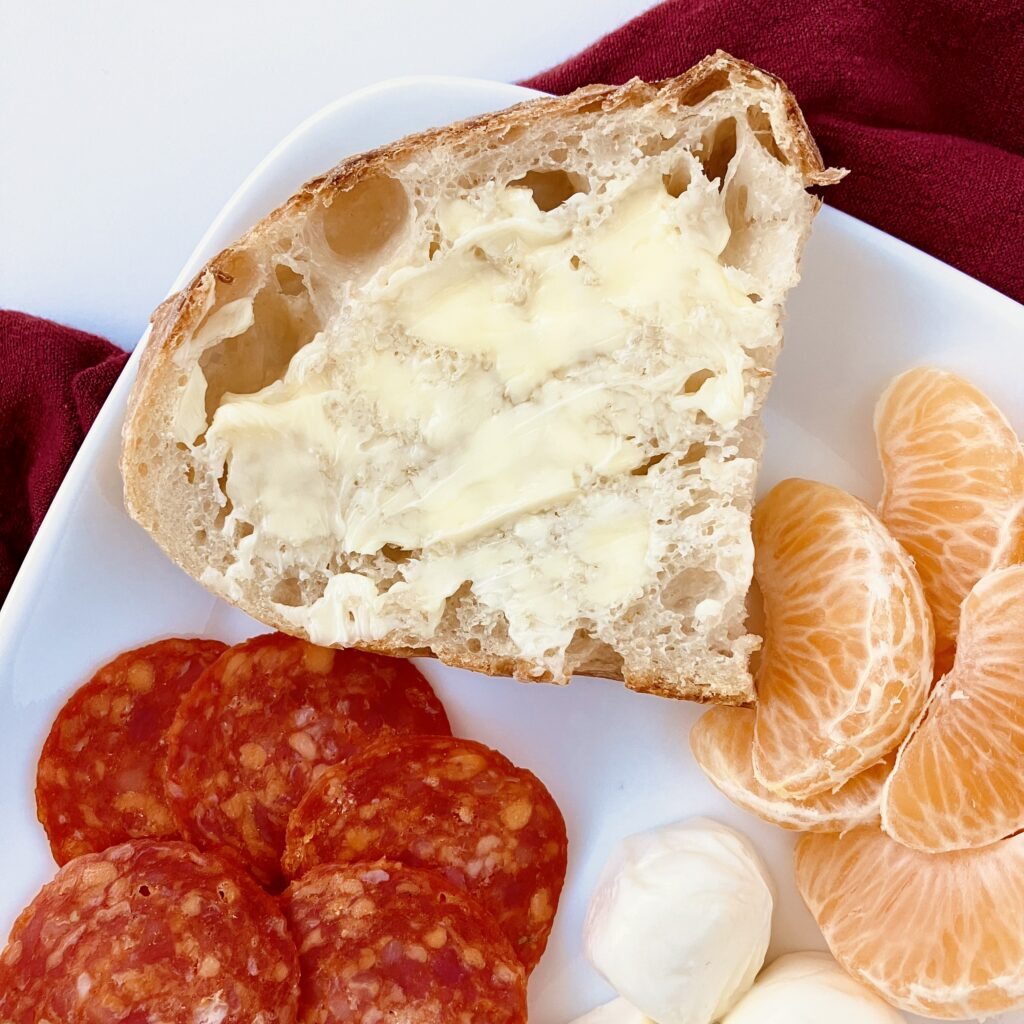
Country Bread
Recipe by Caitlin VincentCourse: Lunch, Dinner, Snack, SideCuisine: UniversalDifficulty: Intermediate45
minutes24
hours45
minutes1
LoafIngredients
350 g filtered water (1 1/2 cups)
100 g active starter (1/2 cup)
465 g bread flour * [see notes] (3 3/4 cups) (This gives a dough hydration of approx. 77%, starter included. You can use more flour [500 g] for a stiffer dough that is easier to work with, or less flour [450 g] for a slightly looser dough. Anywhere in this range [450-500 g flour] will produce great results.)
10 g salt (1 1/2 tsp)
Directions
Mix all ingredients together until the flour is completely absorbed and a shaggy dough is formed.
Allow the dough to rest for 30-60 minutes before beginning the strengthening process.
Strengthen the dough: Complete six sets of folds, spaced at least 15 minutes apart (30-45 minutes is better). You can do stretch-and-folds, coil folds, bench light folds, or letter folds (review all the types of folds here). Make sure the dough is completely relaxed before stretching in order to get the most benefit out of each stretch.
Bulk rise: Let the dough rest until it increases in size by at least 30%, or up to double in size (about 6-9 more hours).
Pre-shape (5:16 in video): Use wet hands to remove the dough from the bowl and turn out onto a clean counter that has been lightly dusted with flour or sprayed with water. Using a bench scraper and your hands, tuck and tighten to form a round. Rest, uncovered, on the counter for 20-30 minutes.
Shape (5:49 in video): Lightly flour a banneton (or a towel/cheesecloth inserted into a 1.5 qt mixing bowl) with rice flour to prevent sticking, or regular flour if you don't have this option (though, some sticking may occur as the flour is absorbed into the dough during the resting period).
Scoop up the pre-shaped dough and flip it over, so the smooth side is on the counter. Fold the left and right sides of the dough into the middle, then repeat with the top of the dough. Last, take the bottom end of the dough and fold it all the way over, so that the seam you have just created is now touching the counter. Using your hands (wet, if needed), tuck and tighten the dough into a smooth ball.
Using your bench scraper, scoop the dough off the counter and place it, seam side up, into the banneton. Pinch together any holes or open seams, or stitch if needed (7:19 in video). Cover with a plastic bag.
Transfer your dough to the refrigerator until the next day (8-16 hours). Or, finish proofing on the counter 1-3 more hours.
The next day (or while your dough is finishing its final proof on the counter), preheat your oven to 450 F. Insert a Dutch oven onto the top rack, and a pizza stone or baking sheet on the bottom rack ** [see note]. Preheat your Dutch oven for at least one hour before baking.
Remove your dough from the fridge. Turn it out onto a silicone baking mat or a piece of parchment paper.
Score the dough: Using a razor blade or bread lame, make one score 1/4 to 1/2 inch deep, making sure the razor is angled parallel with the counter for the most prominent ear. (I used one expansion score for simplicity, but you are welcome to score any design you like at this point, as long as you still have at least one, deep expansion score.)
Place your scored loaf into the preheated Dutch oven and replace the lid.
Bake for 25 minutes with the lid on.
Optionally, five minutes in, score the loaf a second time along the seam where it is expanding (9:57 in video). Make sure to keep your razor parallel with the counter. The only purpose of this is to increase expansion and assure a prominent ear on your loaf.
After 25 minutes, remove the lid of the Dutch oven and bake 20 minutes more.
The bread is finished when it temps about 200 F.
Allow the bread to cool for at least 30 minutes (one to two hours is better) before slicing (otherwise the loaf will be slightly gummy).
Enjoy!
How to store: Store in a Ziploc bag on the counter for three to five days, or slice and store in the freezer.
To reheat: The best option for reheating this bread is to toast it in a toaster, toaster oven, or air dryer until warmed through and crisped to your preference.
Watch the Video
Notes
- Bread flour: THIS IS ABSOLUTELY ESSENTIAL! I tried this recipe at many times using generic all-purpose flour. Though it does make bread, it does NOT yield fabulous results. The higher protein content in bread flour will help the gluten bind and create a strong dough. You may be able to get away with a high-quality all-purpose flour. I use King Arthur Bread Flour (12.7% protein) in any recipe that calls for bread flour.
- Pizza Stone/Baking Sheet: This is not necessary, but the addition of an object underneath the Dutch oven helps create indirect heat, preventing the bottom of the loaf from burning. When experimenting with this recipe, I found that my bread tended to burn on the bottom, and this is one thing that kept that from happening. You could also use aluminum foil, or sprinkle cornmeal under the parchment paper/silicone bread sling.
Join the email list
Join the email list to be notified when a new recipe or blog post comes out. No spam, just sourdough. Unsubscribe at any time.

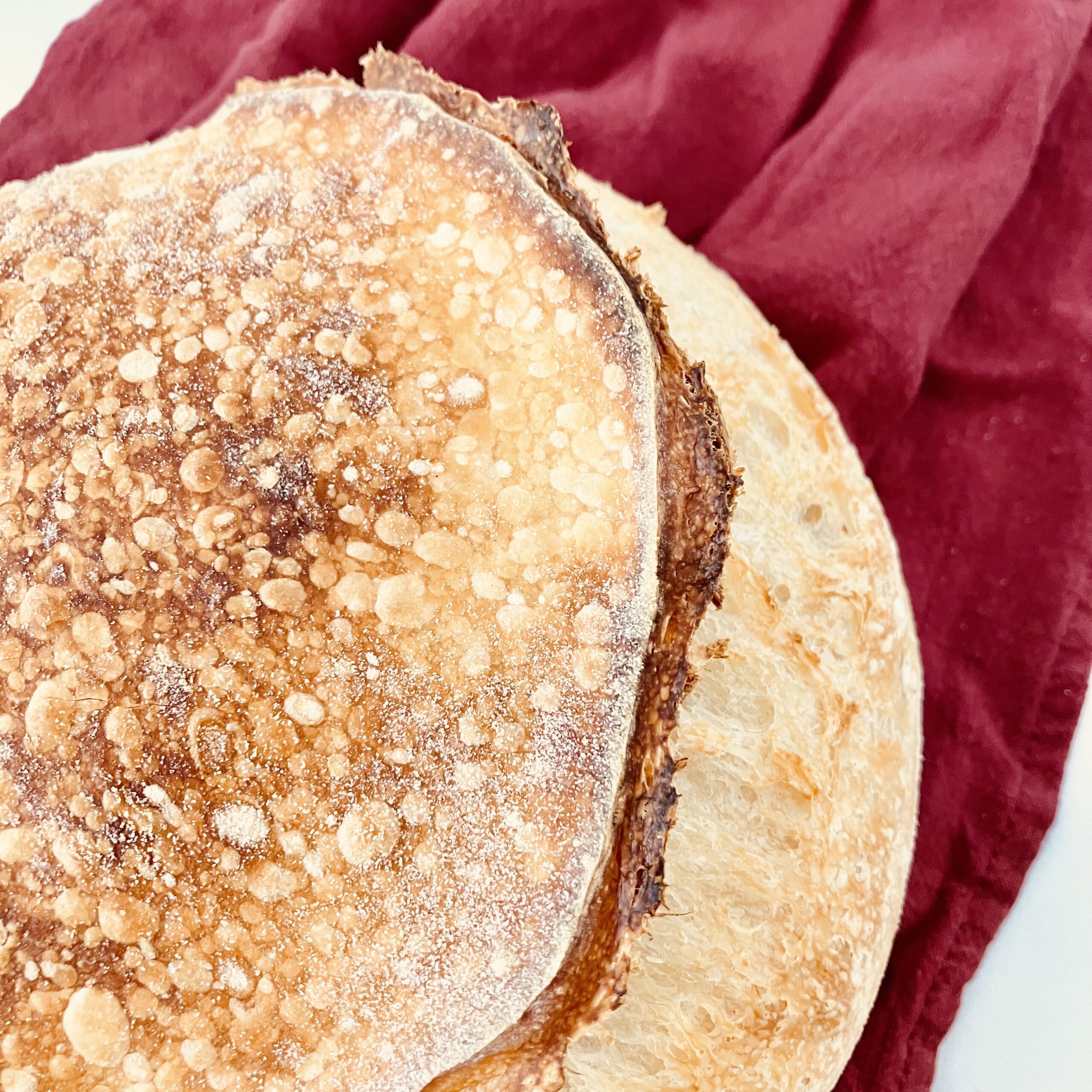
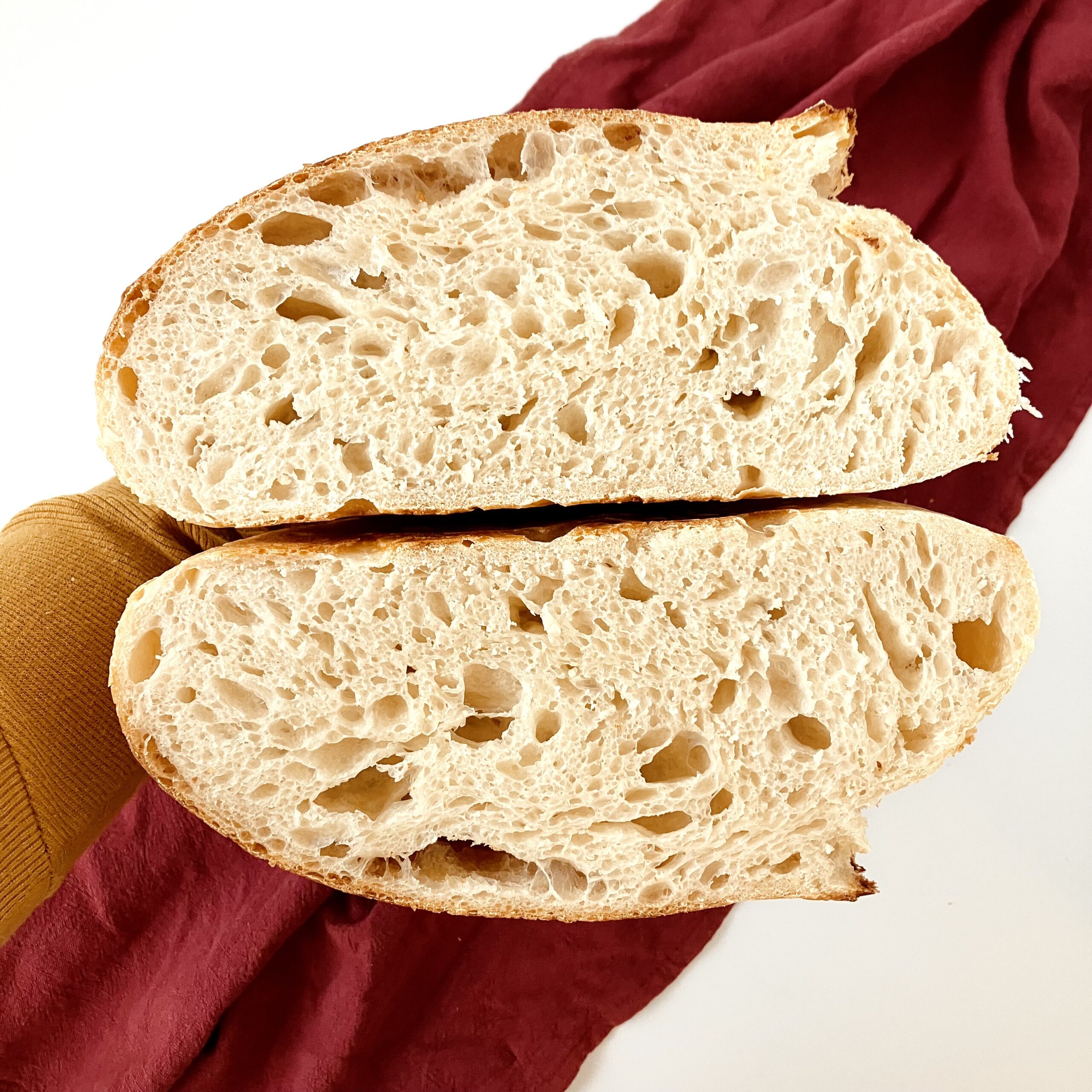
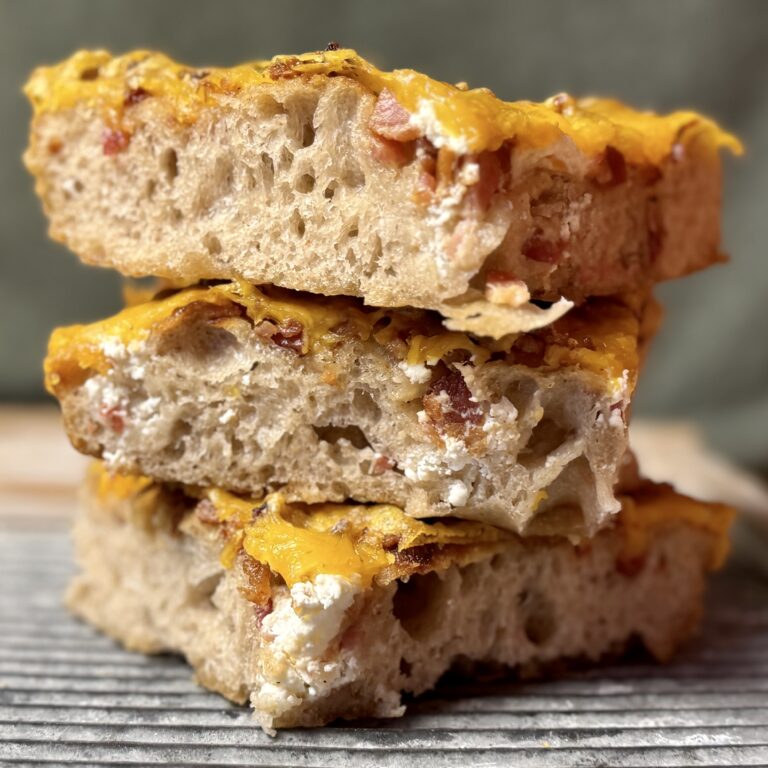
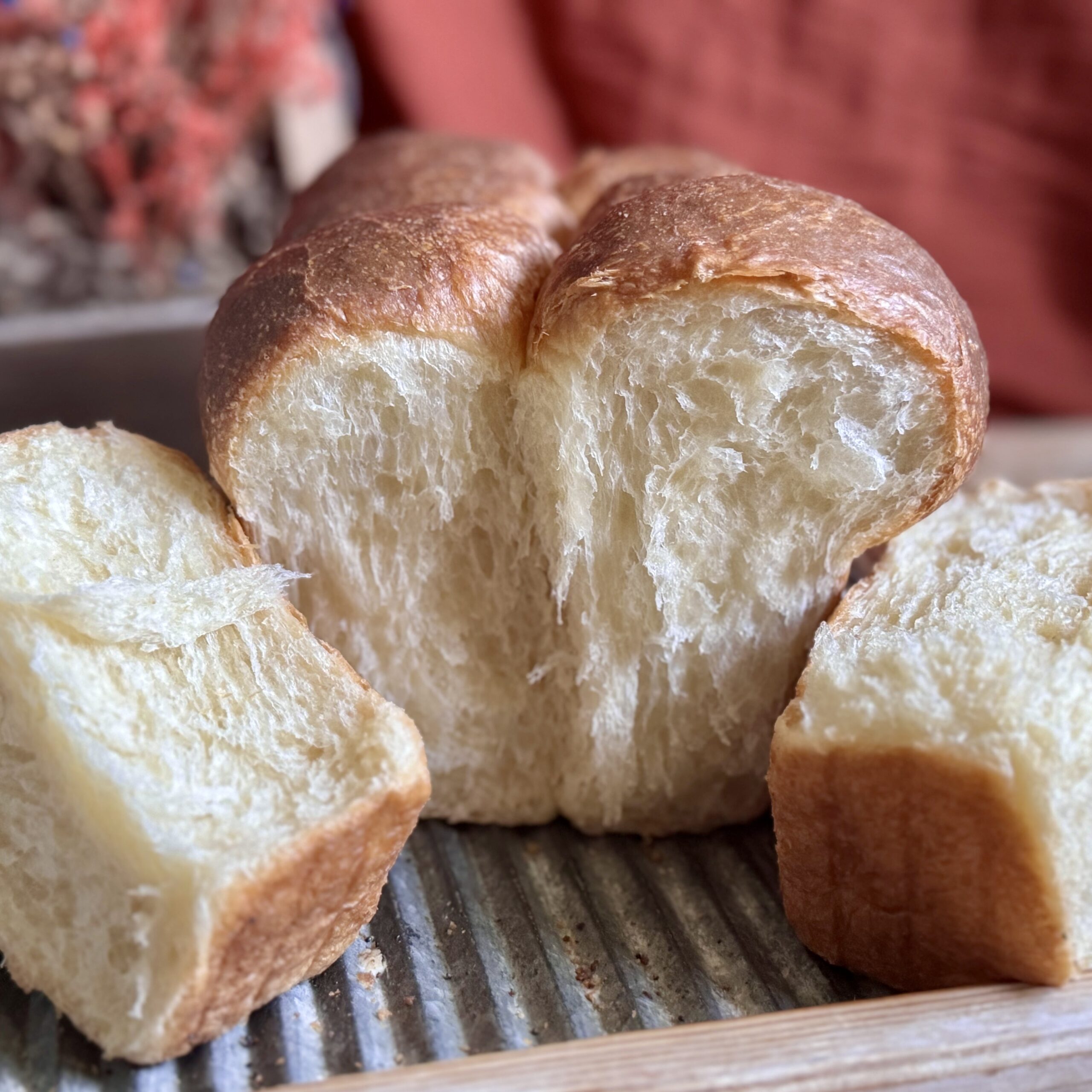
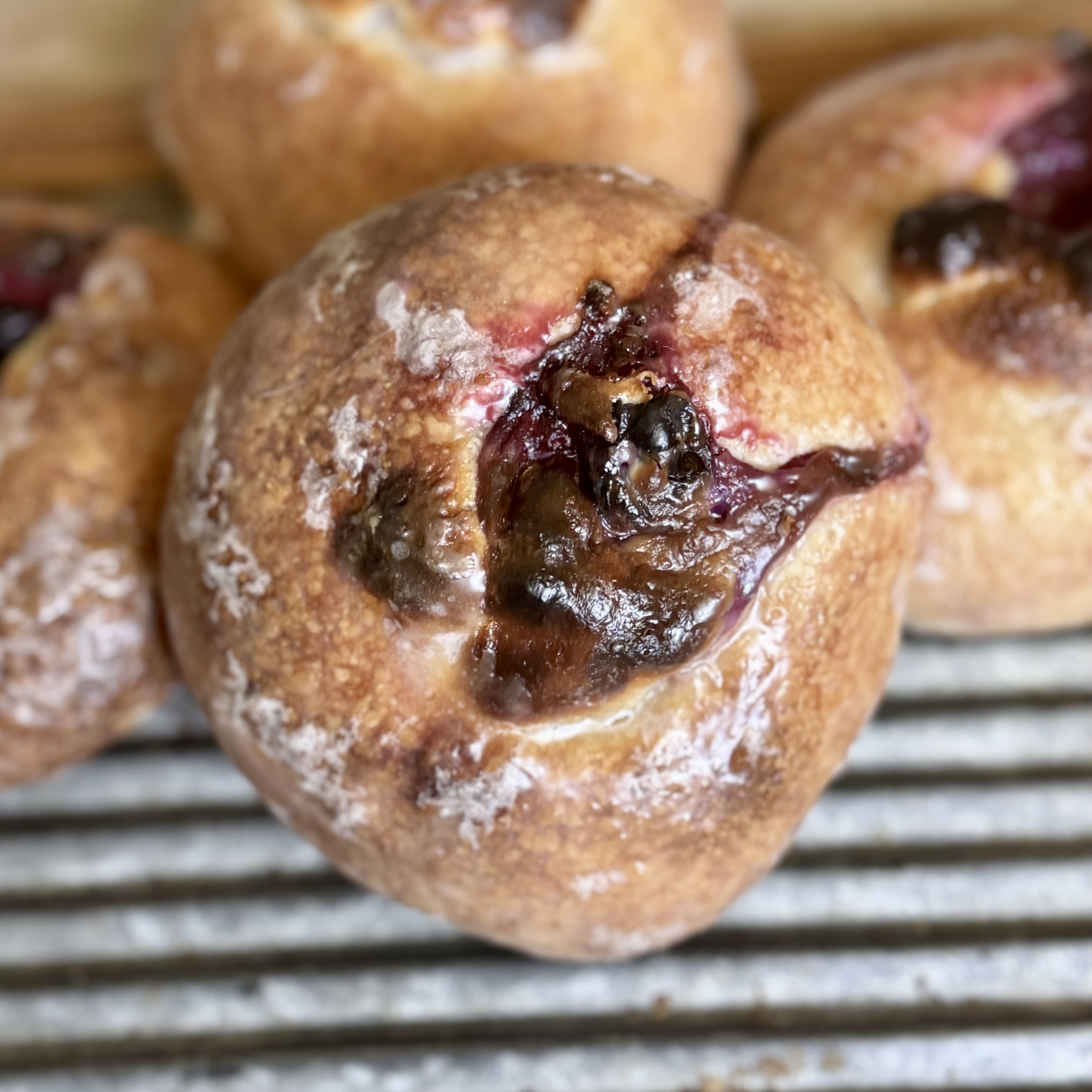
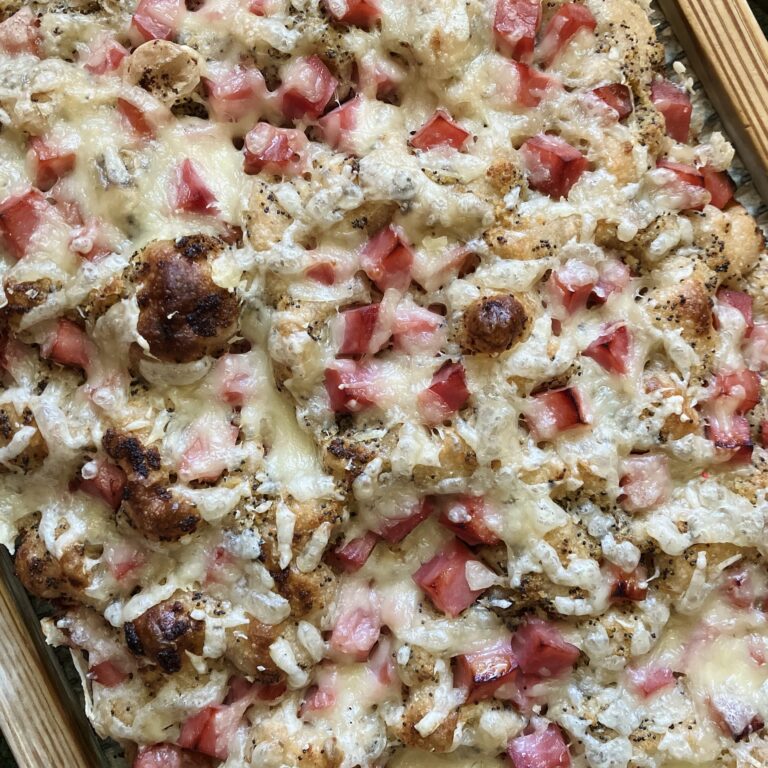
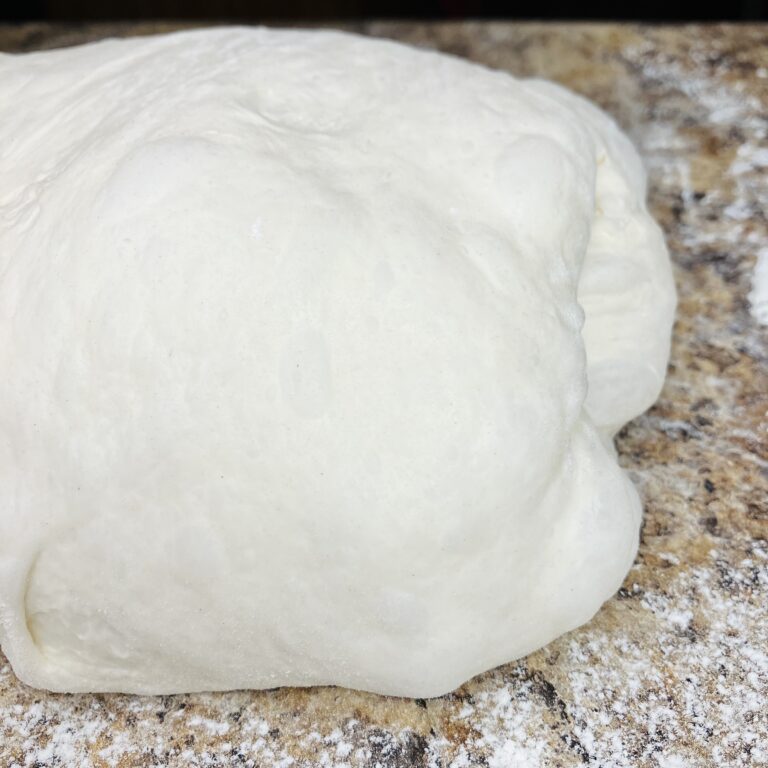
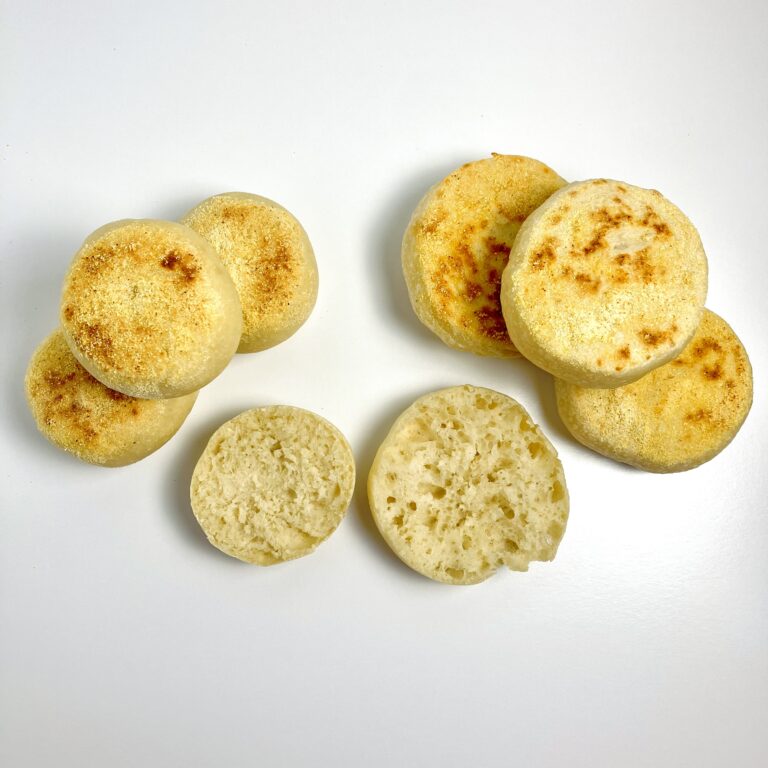
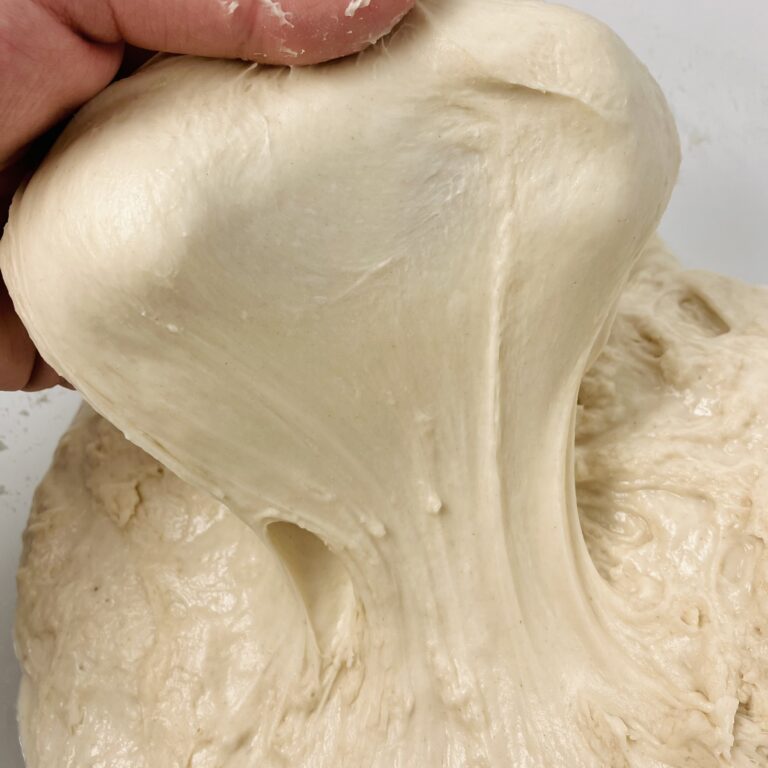
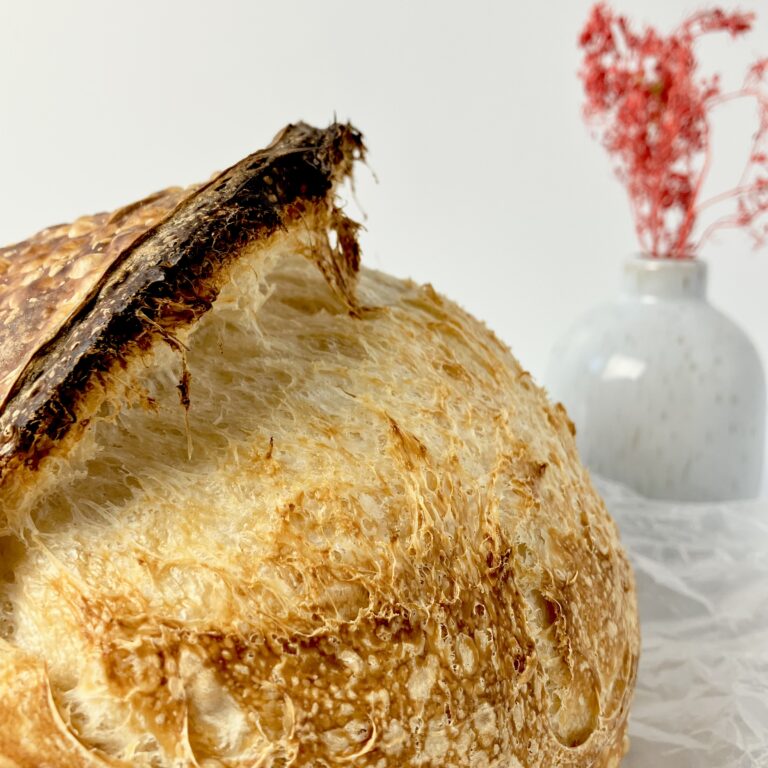
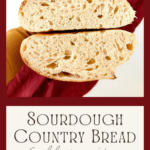
Pingback: Tangzhong – The sourdough Baker
Pingback: BIALY - The Sourdough Baker
Pingback: STAND MIXER SOURDOUGH - The Sourdough Baker
Pingback: MAKING STARTER FROM SCRATCH - The Sourdough Baker